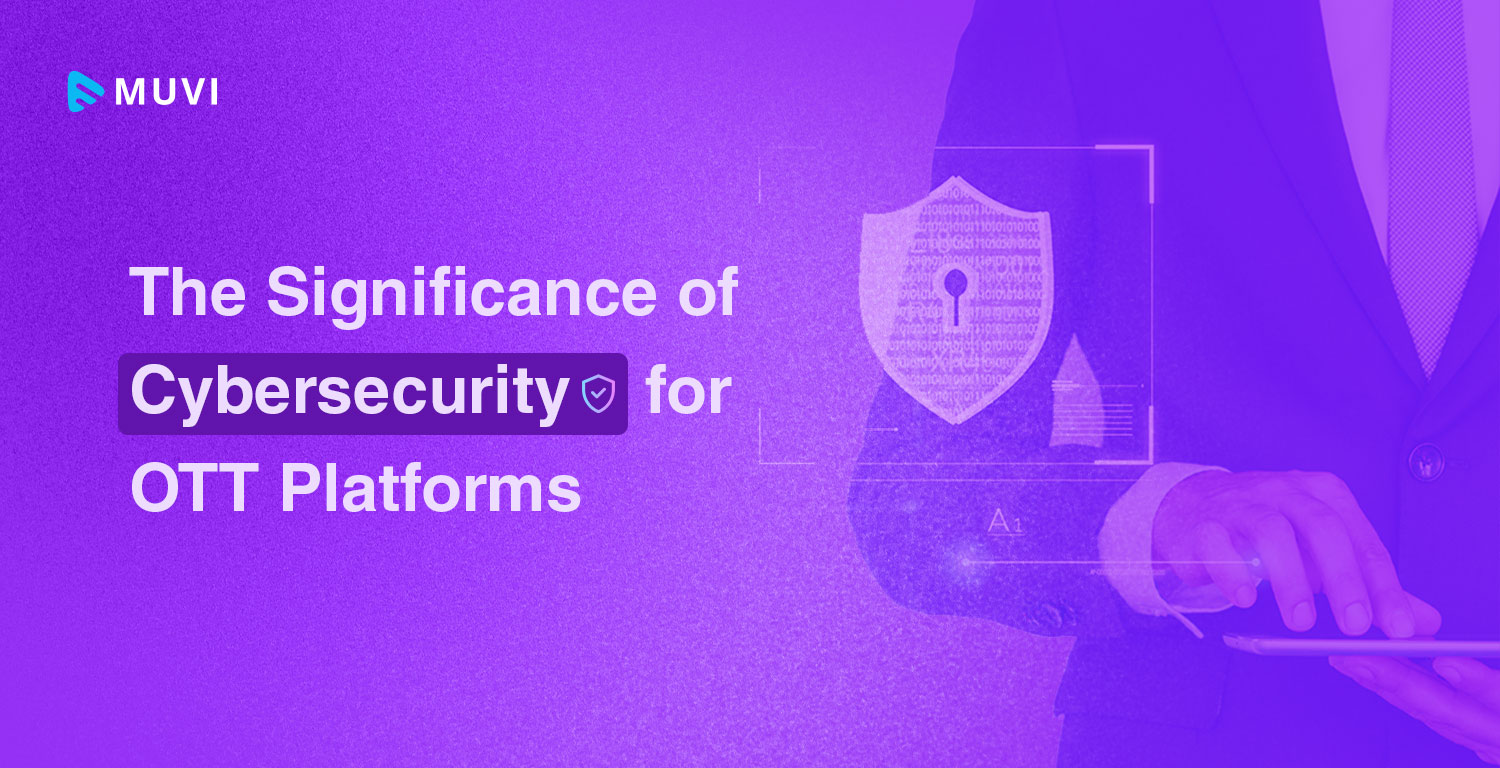Written by: Amita Kumari
Amita is a content writer with Muvi marketing team. She has over 5+ years of experience in content creation and development. Passionate by heart, she likes to cook, write, sing and do yoga to pass time.
In recent years, when we have been locked down in our houses, the only thing that kept us entertained was none other than our favorite OTT platforms like Netflix, Hulu, Amazon Prime, Disney+, ESPN+, HBO Max, and Starz. Be … Continue reading

In recent years, when we have been locked down in our houses, the only thing that kept us entertained was none other than our favorite OTT platforms like Netflix, Hulu, Amazon Prime, Disney+, ESPN+, HBO Max, and Starz. Be it streaming on mobile or our desktop, TV, or laptop, we all have taken full advantage of our subscriptions.
In this blog, we will discuss what makes OTT platforms vulnerable to cyberattacks, why OTT platforms need to focus on cybersecurity, and what to do to mitigate the cyber risk.
What makes OTT platforms vulnerable to cyberattacks ?
Digital data consumption has increased at a startling rate, thus, raising security concerns like data breaches, content piracy, access transparency, and many more.
According to the report, one of India’s most popular OTT platforms was breached in March 2021, compromising the sensitive data of 9 million users. The breached OTT data included customer names, phone numbers, email addresses, and user names associated with their OTT accounts.
OTT platforms have a wide variety of content pieces that are distributed all over the web for the ease of access of the viewers. Viewers can access OTT data through their Web Browsers, Mobile Phones, Smart TVs, Tabs and Desktops.
Each OTT application has its unique architecture, version, operating system, custom code, third-party libraries, and supports different integrations. These are the areas where the application becomes vulnerable. The threat actors gain access to the application system and search for any type of vulnerability. The moment they get a vulnerable point, they start exploiting it. For individuals aiming to deepen their understanding of cybersecurity and tackle such challenges, pursuing a masters in cyber security online can provide the advanced skills needed to safeguard digital platforms.
Here are some of the major cyber threats faced by streaming applications today –
Phishing attack
It is a social engineering attack where the threat actor tries to phish customers by sending them phishing links attached to their emails and messages. When the customer clicks on such a link and enters the credentials or any kind of confidential data, the data is received by the attackers, which is later sold on the dark web for billions of dollars. That’s why it’s always recommended not to click on suspicious links in an email and verify the sender’s authenticity with an SPF checker.
According to a report released by The Guardian, there are more than 700 websites available on the internet that resemble the sign-up pages of OTT platforms like Netflix and Disney+. They take advantage of phishing customers by replicating the streaming platforms and stealing their data without users’ concern.
Credential Stuffing
A credential stuffing cyber attack is the result of consumers using the same ott login credentials for different applications. Here, the hackers use the databases of stolen user credentials to break the login access into user accounts present on several streaming sites and applications.
Brute Force Attack
A brute force attack is performed by automated bots, who perform signing attempts with as many guesses as possible to crack the right credentials to open a user account. The main cause of such a critical cyberattack is a lack of security levels implemented in streaming platforms.
Security measures are always helpful towards knowing where a vulnerability can exist and how to fix it.
Let’s have a look into some of these security measures
The vulnerability assessment system performs an end-to-end scan of the application, including operating systems, system configurations, and software patches, to find out existing vulnerabilities in the application. The management system imports the results from the assessment and lists out the vulnerabilities. Using vulnerability monitoring tools helps in detecting the vulnerabilities and taking the essential incident response measures. Additionally, for OTT platforms seeking to bolster their cybersecurity measures, utilizing structured templates for incident response planning can be invaluable in quickly addressing data breach scenarios.
SCA helps in tracking vulnerabilities in an application’s third-party libraries. In the software composition analysis process, the review is done on the application dependencies. It finds out the existing vulnerabilities and suggests needed upgrades to enclose the vulnerable points in the application.
Penetration testing is also known as pen-testing. It is a form of ethical hacking. In this security testing, simulated cyberattacks on the applications are projected by the penetration testers. It exploits the application system and networks and identifies the security controls that need to be implemented to improve the application security. Pen-testing is aimed towards identifying, analyzing, and detecting web application vulnerabilities like SQL injection, cross-site scripting, and buffer overflow.
With a professional OTT platform, you get total streaming security against cyberattacks. Muvi One’s advanced security features like Multi-DRM, SSL, SSO, User-Authorization help in round-the-clock user data security and support incident detection and response.
To have a close look into Muvi’s latest features and security measures, kindly take a 14-day free trial of Muvi CRM and experience the robust security with professionalism.
Written by: Amita Kumari
Amita is a content writer with Muvi marketing team. She has over 5+ years of experience in content creation and development. Passionate by heart, she likes to cook, write, sing and do yoga to pass time.
Add your comment